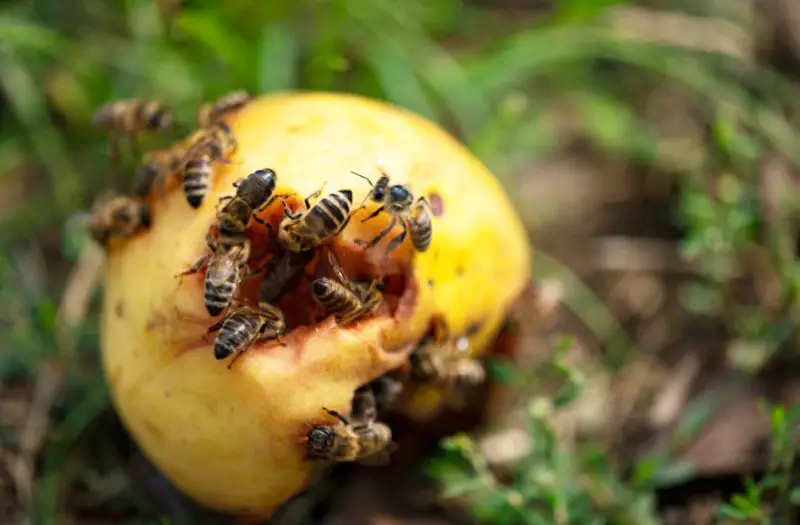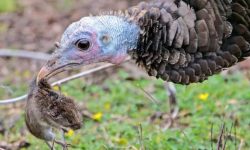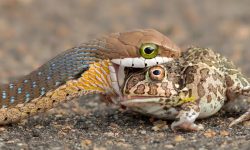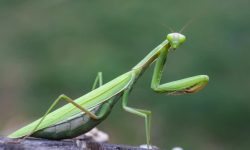Bees are among the most important creatures on Earth. Known for their buzzing energy, delicate flight, and essential role in pollination, bees contribute directly to the survival of plants, ecosystems, and even humans. But have you ever wondered — what do bees actually eat?
While we often associate bees with honey, their diet is far more complex and fascinating. These tiny pollinators rely on flowers for both food and energy, but they also adapt their feeding habits depending on their species, season, and role in the colony.
In this guide, we’ll explore 20 foods bees love the most — from sweet nectars and rich pollens to surprising natural sources that keep them strong, healthy, and thriving all year long.
Understanding the Bee Diet

Bees Are Nature’s Foragers
Bees are omnivorous foragers in the sense that their diet mainly consists of plant materials — particularly nectar and pollen — but they also consume other natural substances that support their health. Every food source they collect has a purpose: nectar provides carbohydrates for energy, while pollen supplies proteins, fats, and vitamins needed for growth.
Unlike many insects, bees are selective eaters. Their feeding habits are closely tied to their environment. The availability of certain flowers, trees, and crops determines what a bee colony eats throughout the year.
The Role of Worker, Queen, and Larvae in Feeding
Inside the hive, every bee has a unique diet. Worker bees rely mostly on nectar for energy. Larvae are fed a protein-rich mixture of pollen and honey known as bee bread, helping them grow quickly. The queen bee is nourished exclusively with royal jelly, a special secretion produced by nurse bees that ensures her fertility and longevity.
Each role in the colony is supported by the hive’s constant effort to gather, store, and process food efficiently. Without this teamwork, the entire colony would collapse.
Seasonal Feeding Behavior
Bees’ diets shift with the seasons. In spring and summer, they feast on abundant nectar and pollen from flowering plants. During autumn, they begin storing honey to survive the winter months when flowers are scarce. In cold climates, bees cluster together in the hive, consuming stored honey to stay warm and maintain energy.
20 Foods Bees Love the Most
1. Nectar
Nectar is the primary source of energy for most bee species. Produced by flowering plants to attract pollinators, it’s a sugary liquid rich in glucose, fructose, and sucrose. Bees collect nectar using their long proboscis and store it in a specialized crop known as the honey stomach. This allows them to transport it back to the hive without digesting it.
Once inside the hive, worker bees transfer nectar to others, who fan it with their wings to reduce water content. Enzymes are added during this process, transforming the nectar into honey. This stored honey becomes the hive’s energy bank for times of scarcity.
Nectar provides quick, digestible carbohydrates that fuel bees’ flight muscles and daily foraging. Without it, colonies would struggle to maintain warmth, flight activity, and hive productivity.
2. Pollen
Pollen is the protein foundation of the bee diet. Bees gather it from the stamens of flowers and mix it with a little nectar to form sticky granules that they carry in pollen baskets on their legs. This bright dust is vital for larvae, which rely on it for growth and muscle development.
Inside the hive, worker bees feed pollen directly to larvae and young nurse bees. It provides amino acids, lipids, and micronutrients that ensure strong brood development. A single forager can collect thousands of pollen grains during one trip.
Bees also ferment pollen with nectar and enzymes to create bee bread, a preserved protein food that sustains the colony during poor foraging conditions.
3. Honey
Honey is the lifeblood of the hive — the colony’s primary food and energy storage. Bees create it from nectar through repeated regurgitation, enzyme activity, and dehydration. Once the moisture content drops below 20%, bees cap it in wax cells to prevent spoilage.
During winter or rainy weather, when flowers are unavailable, bees rely entirely on honey to survive. They consume it to generate heat and fuel movement inside the hive cluster.
Honey also possesses natural antibacterial and antifungal properties, protecting the colony from microbes and diseases that could otherwise threaten the hive.
4. Royal Jelly
Royal jelly is an exclusive, high-nutrient food secreted by nurse bees from glands in their heads. It contains a rich blend of proteins, fats, sugars, vitamins, and hormones that promote rapid growth and longevity.
While all larvae consume royal jelly during their first few days, only the future queen continues to eat it throughout her life. This diet transforms her into the largest bee in the colony, capable of laying thousands of eggs.
Royal jelly ensures the health and fertility of the queen, which in turn sustains the strength and continuity of the entire hive.
5. Bee Bread
Bee bread is a fermented superfood made by mixing pollen, honey, and bee enzymes. The fermentation process enhances its nutritional profile, adding beneficial bacteria and breaking down pollen into more digestible forms.
Stored in comb cells, bee bread serves as the main protein source for developing larvae and nurse bees. It remains edible for months, even during long winters or droughts.
This carefully crafted food acts as a biological pantry, ensuring that the hive never runs out of vital nutrients when fresh pollen is unavailable.
6. Tree Sap
Tree sap offers bees a backup carbohydrate source when flowers are scarce. It contains natural sugars, minerals, and small amounts of amino acids. Species like stingless bees and resin bees frequently collect sap to feed on and use in nest construction.
Some bees use tree sap mixed with wax to seal cracks in the hive or reinforce honeycomb walls. It doubles as both food and building material.
Sap collection often occurs in early spring or late autumn, providing an essential energy supplement when floral nectar is limited.
7. Honeydew
Honeydew is a sweet, sticky substance secreted by aphids and scale insects feeding on plant sap. Bees gather it from leaves and stems, particularly in forests where aphid populations are high.
It serves as a valuable nectar substitute during dry periods or in cooler climates. Honey made from honeydew is darker, richer in minerals, and has a distinct, molasses-like flavor.
This resource demonstrates the adaptability of bees — even when traditional flowers fade, they find nourishment in the unexpected corners of nature.
8. Fruit Juice
Bees occasionally sip the juices from ripe or fallen fruits like apples, plums, grapes, and pears. Fruit juice provides sugar, water, and trace vitamins, helping bees maintain hydration and energy during dry seasons.
In late summer and fall, when flowering plants dwindle, fallen fruit becomes an accessible sugar source for both honeybees and wild bees.
However, bees typically avoid overfermented fruit, as alcohol can be harmful. They prefer slightly overripe fruit that offers clean, natural sweetness.
9. Plant Resins
Plant resins are sticky substances collected by certain bees, such as stingless and resin bees, to create a compound called propolis. Resins are used to seal cracks and sterilize the hive, but bees may also ingest trace amounts.
These natural resins are full of antioxidants and antimicrobial compounds, supporting bees’ immune systems and gut health.
Propolis acts as a chemical defense barrier against pathogens and fungi, turning the hive into a fortress of hygiene and stability.
10. Water
Though not technically food, water is indispensable to bees. It helps regulate hive temperature, aids in honey production, and maintains hydration for larvae.
Worker bees collect droplets from ponds, streams, or dew-covered leaves and carry them back in their crops. Inside the hive, the water is distributed where needed — to cool brood combs or dilute crystallized honey.
During hot weather, water collection becomes a constant activity, keeping the colony cool and functional.
11. Clover
Clover blossoms produce nectar that’s light, fragrant, and abundant — one of the most essential nectar sources for honeybees worldwide. The resulting honey is pale and mild, prized for its delicate sweetness.
Clover pollen is also rich in amino acids, calcium, and vitamins, making it an excellent source of nutrition for brood rearing.
Beekeepers often cultivate clover fields near hives to ensure bees have consistent access to this nutrient-rich food during spring and early summer.
12. Wildflowers
Wildflowers offer bees a buffet of nectar and pollen varieties, each contributing unique nutrients. Their staggered blooming cycles provide year-round foraging opportunities.
Bees feeding on diverse wildflower species create honey with complex flavors and higher mineral content. The biodiversity also strengthens colony immunity.
Preserving wildflower meadows is essential for pollinator survival, as these natural habitats supply the balanced diet bees need to thrive.
13. Sunflowers
Sunflowers are a favorite of both honeybees and bumblebees. Their massive heads produce abundant pollen that’s sticky and protein-dense.
The bright yellow petals act as visual lures, drawing bees from long distances. The nectar, though moderate, provides valuable carbohydrates.
Sunflower pollen helps strengthen bee larvae, supporting better brood health and improving overall colony vitality.
14. Lavender
Lavender is one of the most bee-attractive flowers due to its strong aroma and rich nectar flow. Its essential oils also contain mild antibacterial compounds that benefit bee health.
Bees visiting lavender fields produce light, aromatic honey with a distinctive floral flavor. The blossoms bloom over an extended period, ensuring consistent food availability.
Planting lavender near hives not only supports bees nutritionally but also promotes a calming environment that reduces forager stress.
15. Eucalyptus Blossoms
Eucalyptus trees are vital for bees in warm and subtropical regions. Their blossoms produce thick, mineral-rich nectar that provides energy and hydration.
Bees feeding on eucalyptus also benefit from trace medicinal compounds found in the nectar, which may boost immune strength.
Eucalyptus honey is dark, robust, and rich in antioxidants — a testament to the tree’s nutritional value for both bees and humans.
16. Berries
Berry plants like blackberries, raspberries, and blueberries are dual food sources — bees feed on their blossoms’ nectar and occasionally drink from damaged fruits.
These flowering shrubs attract both solitary and social bees, providing refuge and nutrition.
Berry nectar produces delicious, fruit-forward honey varieties while supporting early-summer foraging activity essential for hive buildup.
17. Vegetable Blossoms
Flowering vegetables such as squash, zucchini, cucumbers, and beans provide bees with both nectar and pollen.
Their large, open blooms make it easy for bees to collect food, while simultaneously pollinating plants and improving crop yields.
Encouraging vegetable gardens to bloom naturally creates a mutually beneficial cycle — bees get nourishment, and humans enjoy abundant harvests.
18. Maple Blossoms
In early spring, maple trees bloom before many other plants, offering one of the season’s first nectar and pollen sources. This timing is crucial for colonies recovering from winter.
Maple nectar is light and energizing, helping bees regain strength after months of confinement. The pollen supports early brood rearing.
For beekeepers, maple bloom signals the start of the foraging year — a vital step in rebuilding hive productivity.
19. Goldenrod
Goldenrod blossoms appear in late summer and fall, serving as one of the last major nectar flows of the year.
Its nectar produces strong, slightly spicy honey that fuels colonies heading into winter. Goldenrod pollen is also rich in fats and amino acids, essential for overwintering bees.
By foraging on goldenrod, bees accumulate the energy reserves needed to survive months without flowers.
20. Almond Blossoms
Almond trees are a crucial early-season food for bees, blooming before most other plants. Their nectar and pollen jumpstart colony activity after winter dormancy.
During almond pollination season, bees gather large quantities of both nectar and high-protein pollen, which helps expand the brood.
This symbiotic relationship is vital to agriculture — bees ensure almond trees bear fruit, while the trees provide the nourishment bees need to thrive in spring.
20. Almond Blossoms
Almond trees are a major food source for bees in agricultural areas. Their blossoms appear early in the year, offering one of the first large-scale nectar flows.
Bees pollinate almond orchards while feeding, creating a mutual benefit for farmers and hives alike.
The pollen from almond flowers contains vital proteins that help strengthen colonies for the year ahead.
Frequently Asked Questions (FAQs)
Do all bees eat the same food?
Not exactly. While all bees rely on nectar and pollen, different species — such as honeybees, bumblebees, and stingless bees — have unique preferences depending on their habitats.
What do bees eat in winter?
During winter, bees feed mainly on stored honey and bee bread. They cluster together in the hive to conserve energy and warmth.
Do bees eat honey?
Yes. Bees consume their own honey for energy, especially during cold or rainy weather when foraging isn’t possible.
Do bees drink water?
Absolutely. Bees collect water to regulate hive temperature and keep larvae hydrated. It’s essential to their daily routine.
Can bees survive without flowers?
Not for long. Flowers provide nectar and pollen — the foundation of their diet. Without them, bees struggle to find enough food to sustain the colony.
Conclusion
Bees may be small, but their diet supports the entire ecosystem. From nectar and pollen to tree sap and honeydew, every food they collect plays a vital role in both their survival and the health of the planet.
These incredible foragers work tirelessly to gather nutrients that sustain not only their colonies but also countless plant species through pollination. By understanding what bees eat and supporting them with diverse, pesticide-free blooms, we help ensure their continued success.
The next time you see a bee hovering over a flower, remember — it’s not just searching for a snack. It’s feeding the world.






